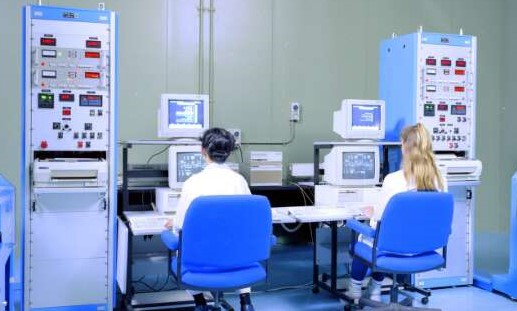This blog, co-written with our Partnerships Lead Jackie Randles, was first published on the National Library of Australia’s website.
In July 1970, Heinz von Foerster, a leading Austrian American scientist, delivered an address to what is now the University of Wisconsin’s I-School, and what was then the Library Institute. He had been asked to reflect on the ways in which emerging computational technologies would impact the future of the library and library staff.
Rather than directly addressing this brief, von Foerster instead argued that library staff had considerable agency in deciding not only what technologies might be successful in libraries, but what technologies might be successful writ large. In so doing, he made clear his belief in the power of libraries and their centrality to what he poetically described as the ‘’social fabric of the future’’.
The library – as an idea, a place, and a cybernetic system – has always been an investment in, and a vision about, the future. Recently the National Library of Australia and the ANU School of Cybernetics conducted a thought experiment: If library indexing has informed the structure of search on the internet, how might the library inform new ways of connecting these large caches of information to generate meaning?
Von Foerster articulated two important and complementary roles for libraries and library staff — as custodians of collections and midwives of ideas. More than half a century later, his words still make considerable sense.
Custodians and Midwives is the outcome of a research collaboration between the National Library of Australia (NLA) and ANU School of Cybernetics (SoCy) undertaken in the first half of 2021. During the collaboration, SoCy researchers investigated and evaluated the potential new dynamics that will emerge if, and when, the NLA integrates tools and processes enabled by promising artificial intelligence (AI) technology capabilities into core work processes of the organisation’s mission to “collect, preserve and make accessible” library materials (National Library Act 1960 (Cth)).
As AI systems are increasingly embedded in everyday processes and spaces, we propose a cybernetic approach as a compelling way of thinking about how to design and manage complex systems that are dynamic, interactive, and relationship-dependent.
Cybernetics first found form in the 1940 and 1950s as a response to the rapid expansions in computing technology following World War II, fusing maths, engineering, and philosophy with biology, psychology, anthropology and many other fields. From its inception, cybernetics was a generative intellectual wellspring, shaping everything from AI to critical systems theory computer-driven art and music, design thinking, and the internet.
The idea of cybernetics – of steering a technological object, and of the idea of humans in the loop, and of the environment in that same loop – is just as relevant today as it was 70 years ago, providing us with hopeful and actionable ways to imagine our futures. Cybernetics seems particularly relevant to the NLA as it seeks to fulfil its role to “collect, preserve and make accessible” resources of national significance, as defined by the National Library Act 1960 (Cth).
In Custodians and Midwives, we take a cybernetic systems approach to the questions of how new and emerging technology capabilities might shape and be shaped by the future of the NLA. We evaluate the various opportunities, risks, pitfalls, and issues with AI over the timescales and rhythms that characterize the library as a cybernetic system by:
-
Assessing the suitability and fit of emerging AI capabilities for the NLA, not only in isolation but also within the broader system of the whole – its people, its systems and processes, and its data, collections, and extant infrastructure.
-
Exploring the technological innovation in and of libraries, and the pathways that have led to new AI capabilities in these systems, focusing on automation, digitisation, and AI.
-
Using science fiction to prototype and explore the future state of the library, focusing specifically on four sets of AI capabilities identified as priorities by the NLA collections branch: Optical Character Recognition, Machine Transcription, Machine Actional Collections and Transparent AI.
-
Examining attendant opportunities, risks, pitfalls, and issues with a further overview using science fiction prototype speculative fiction exercises to provide pathways for decision makers at the NLA as they encounter specific solutions or approaches that may be incorporated into library practice.
-
Offering the “Cybernetic Star”, a technology reference guide, for the NLA to evaluate its options for incorporating AI into library practice, now and into the future.
